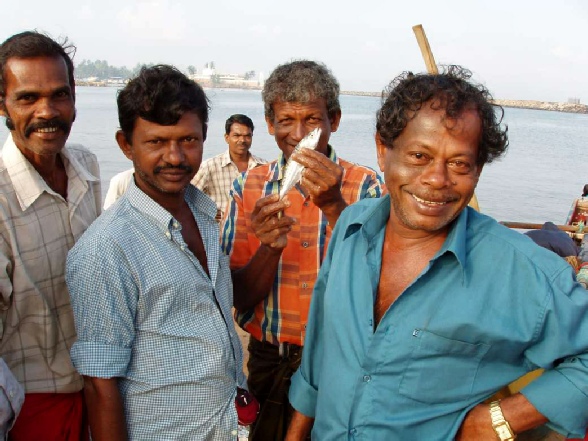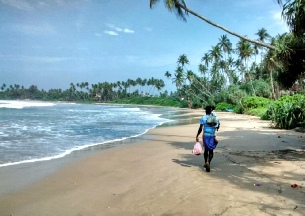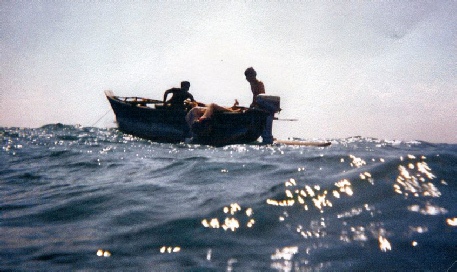© 2023 Dr Margaret Sheppard
Fishermen
The sea fishermen are based from their local beaches and are often formed into local Fishermen’s Associations. These local groups tend to be very protective of their fishing grounds . Young men and boys usually learn from their fathers or relatives. Newcomers can join but start by crewing for other established fishermen. There is much to learn -







A Tank Boat owner
Fishermen who have just returned from night fishing


Jaffna Peninsula -
This method of fishing can only be deployed in shallow calm fishing grounds close to shore.
Fisherman setting off, Pedro’s Point on the Jaffna Peninsula
Fisherman returning with his catch along Dikwella Beach after night fishing
The return of the fishermen -
Lobster fishermen, Godawaya. The orus are very narrow and there is little room for the crew. As they catch the lobsters, they surface and hand them to the boatman to store in the bottom of the oru.


Once landed the lobsters are carefully disentangled from the fishing nets. They are then buried in the sand to keep them cool whist the fishermen await the traders.



















Fisherman, displaying catch of pipe fish to potential customers. These are usually caught with a fishing line from shore or boat.
Carefully stowing nets and checking for holes after a fishing trip.
Nets are stored above the high tide line on the beach next to the boats or in, fishing huts or they may be taken home.



Finally, when the boats are dragged back above the hide tide line, the catch is sold and distributed, the nets are safely stored, fishermen return to their homes until the next night’s fishing
However nets need to be repaired and preparations made for the next trip
These fishermen are preparing their nets and floats for catching “big” fish, further out to sea. They will set the nets with their weights and floats and then return a few hours later to “reel in the catch”. They mark their floats with their sign to indicate their ownership and prevent encroachment and disputes with other fishermen.